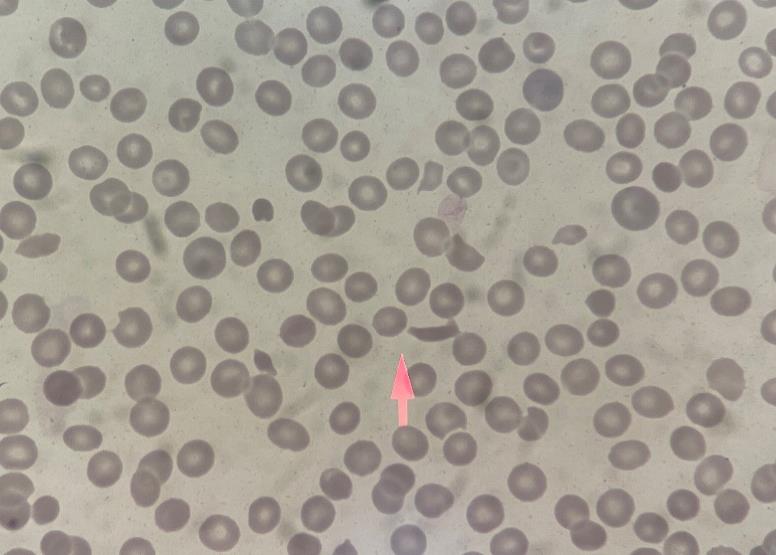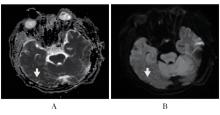| 1 |
STALEY E M, CAO W J, PHAM H P, et al. Clinical factors and biomarkers predict outcome in patients with immune-mediated thrombotic thrombocytopenic purpura[J]. Haematologica, 2019, 104(1): 166-175.
|
| 2 |
JOLY B S, COPPO P, VEYRADIER A. Thrombotic thrombocytopenic purpura[J]. Blood, 2017, 129(21): 2836-2846.
|
| 3 |
SALUJA P, GAUTAM N, YADALA S, et al. Thrombotic thrombocytopenic purpura (TTP) after COVID-19 vaccination: a systematic review of reported cases[J]. Thromb Res, 2022, 214: 115-121.
|
| 4 |
中华医学会血液学分会血栓与止血学组. 血栓性血小板减少性紫癜诊断与治疗中国指南(2022年版)[J]. 中华血液学杂志, 2022, 43(1): 7-12.
|
| 5 |
LI A, KHALIGHI P R, WU Q, et al. External validation of the PLASMIC score: a clinical prediction tool for thrombotic thrombocytopenic purpura diagnosis and treatment[J]. J Thromb Haemost, 2018, 16(1): 164-169.
|
| 6 |
CUKER A, CATALAND S R, COPPO P, et al. Redefining outcomes in immune TTP: an international working group consensus report[J]. Blood, 2021, 137(14): 1855-1861.
|
| 7 |
ROCK G, KELTON J G, SHUMAK K H, et al. Laboratory abnormalities in thrombotic thrombocytopenic purpura. Canadian Apheresis Group[J]. Br J Haematol, 1998, 103(4): 1031-1036.
|
| 8 |
ALLFORD S L, HUNT B J, ROSE P, et al. Guidelines on the diagnosis and management of the thrombotic microangiopathic haemolytic anaemias[J]. Br J Haematol, 2003, 120(4): 556-573.
|
| 9 |
MATSUMOTO M, FUJIMURA Y, WADA H, et al. Diagnostic and treatment guidelines for thrombotic thrombocytopenic purpura (TTP) 2017 in Japan[J]. Int J Hematol, 2017, 106(1): 3-15.
|
| 10 |
GIUFFRIDA G, CONDORELLI A, DI GIORGIO M A, et al. Immune-mediated thrombotic thrombocytopenic purpura following administration of Pfizer-BioNTech COVID-19 vaccine[J]. Haematologica, 2022, 107(4): 1008-1010.
|
| 11 |
STOLL M, RÜHLE F, WITTEN A, et al. Rare variants in the ADAMTS13 von willebrand factor-binding domain contribute to pediatric stroke[J]. Circ Cardiovasc Genet, 2016, 9(4): 357-367.
|
| 12 |
PEREIRA A, MAZZARA R, MONTEAGUDO J, et al. Thrombotic thrombocytopenic purpura/hemolytic uremic syndrome: a multivariate analysis of factors predicting the response to plasma exchange[J]. Ann Hematol, 1995, 70(6): 319-323.
|
| 13 |
MATSUMOTO M, YAGI H, ISHIZASHI H, et al. The Japanese experience with thrombotic thrombocytopenic purpura-hemolytic uremic syndrome[J]. Semin Hematol, 2004, 41(1): 68-74.
|
| 14 |
SAWLER D, PARKER A, BRITTO J, et al. Time from suspected thrombotic thrombocytopenic purpura to initiation of plasma exchange and impact on survival: a 10-year provincial retrospective cohort study[J]. Thromb Res, 2020, 193: 53-59.
|
| 15 |
JOLY B S, COPPO P, VEYRADIER A. An update on pathogenesis and diagnosis of thrombotic thrombocytopenic purpura[J]. Expert Rev Hematol, 2019, 12(6): 383-395.
|
| 16 |
SCULLY M, HUNT B J, BENJAMIN S, et al. Guidelines on the diagnosis and management of thrombotic thrombocytopenic purpura and other thrombotic microangiopathies[J]. Br J Haematol, 2012, 158(3): 323-335.
|
| 17 |
SADLER J E. Pathophysiology of thrombotic thrombocytopenic purpura[J]. Blood, 2017, 130(10): 1181-1188.
|
| 18 |
ASMIS L M, SERRA A, KRAFFT A, et al. Recombinant ADAMTS13 for hereditary thrombotic thrombocytopenic purpura[J]. N Engl J Med, 2022, 387(25): 2356-2361.
|
| 19 |
SADLER J E, MOAKE J L, MIYATA T, et al. Recent advances in thrombotic thrombocytopenic purpura[J]. Hematology Am Soc Hematol Educ Program, 2004: 407-423.
|
| 20 |
KREMER HOVINGA J A, VESELY S K, TERRELL D R, et al. Survival and relapse in patients with thrombotic thrombocytopenic purpura[J]. Blood, 2010, 115(8): 1500-1511;quiz1662.
|
| 21 |
VERBEKE L, DELFORGE M, DIERICKX D. Current insight into thrombotic thrombocytopenic purpura[J]. Blood Coagul Fibrinolysis, 2010, 21(1): 3-10.
|
| 22 |
SAYANI F A, ABRAMS C S. How I treat refractory thrombotic thrombocytopenic purpura[J]. Blood, 2015, 125(25): 3860-3867.
|
| 23 |
BLOMBERY P, SCULLY M. Management of thrombotic thrombocytopenic purpura: current perspectives[J]. J Blood Med, 2014, 5: 15-23.
|
| 24 |
SCHLEINITZ N, EBBO M, MAZODIER K, et al. Rituximab as preventive therapy of a clinical relapse in TTP with ADAMTS13 inhibitor[J]. Am J Hematol, 2007, 82(5): 417-418.
|
| 25 |
DEFORD C C, REESE J A, SCHWARTZ L H, et al. Multiple major morbidities and increased mortality during long-term follow-up after recovery from thrombotic thrombocytopenic purpura[J]. Blood, 2013, 122(12): 2023-2029;quiz2142.
|
| 26 |
ROBERTZ J, ANDRES M, MANSOURI TALEGHANI B, et al. Obinutuzumab in two patients suffering from immune-mediated thrombotic thrombocytopenic purpura intolerant to rituximab[J]. Am J Hematol, 2019, 94(10): E259-E261.
|
| 27 |
CALLEWAERT F, ROODT J, ULRICHTS H, et al. Evaluation of efficacy and safety of the anti-VWF Nanobody ALX-0681 in a preclinical baboon model of acquired thrombotic thrombocytopenic purpura[J]. Blood, 2012, 120(17): 3603-3610.
|
| 28 |
TSE B, BUCHHOLZ M, PAVENSKI K. Management of immune thrombotic thrombocytopenic purpura with caplacizumab: a Canadian, single-centre, real-world experience[J]. Platelets, 2023, 34(1): 2157807.
|
| 29 |
MORONITI J J, VRBENSKY J R, NAZY I, et al. Targeted ADAMTS-13 replacement therapy for thrombotic thrombocytopenic purpura[J]. J Thromb Haemost, 2024, 22(4): 896-904.
|
| 30 |
ZHENG L, ZHENG X L. How should caplacizumab be used for treatment of immune thrombotic thrombocytopenic purpura?[J]. Ann Blood, 2023, 8: 11.
|
 )
)






